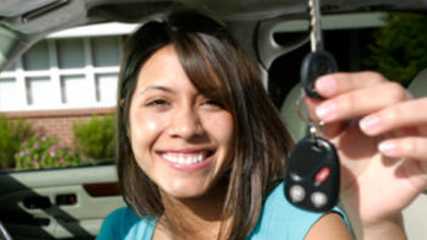Best First Cars 2009 Review
By Karla Pincott · 30 Sep 2009
High school leavers are now facing one of the most important, daunting, yet exciting decisions of their life in buying their first car.There are so many factors to think about: price, safety, economy, running costs, vehicle age, insurance; all on limited funds and with limited knowledge about cars, and finance.To most young people, the most important thing is probably looks. After all, you don't want to be spotted by all your mates in a white Camry in the drive-through at Maccas. And who can blame you? That's why so many young people buy old grey-import Sylvias instead of Camrys. It's because they are red, they look fast and they were featured in one of the Fast and Furious movies.However, often the car ends up spending most of its time being repaired, waiting on a part to come from Japan or simply getting it to start, steer and stop. But is used the way to go? There are many small new cars on the market from as low as $13,990 which have the latest modern safety features, plus advantages of new car warranties.The best three tips we can give you are: research, research and more research. Young buyers can start by looking at classified ads on the internet and in newspapers. Comparisons will give the buyer a good feel for the true price of a car. You should work out what you need in a car even before you start looking for one.There are choices people can make when buying a new vehicle that may significantly reduce their risk of injury and theft and can even result in savings when it comes to car insurance.What you can expect for your money Young buyers are usually on a fairly limited budget. That will reduce the number of cars available.RACQ technical officer Russell Manning advises what you can expect for your money on used cars.$3000 to $5000 Few dealers operate in this segment, so look to private sales, and all the potential problems that come with them.There are no stand-outs in this segment.Buy the best you can find for the money.Steer clear of unusual, unpopular and modified vehicles, as they're more likely to cost more to keep on the road. Expect to be mainly looking at vehicles from the mid '80s.$5000 to $7500 Many dealers specialise in this bracket.Look for cars that are popular and have a good reputation, for example early 1990s Corolla, Pulsar, Lancer for small cars, and Commodore, Falcon, Camry for large cars.Anything in this bracket is likely to have travelled big distances, so look carefully.Bigger, less fuel-efficient cars are less popular these days and, depending on your circumstances, may be a good buy.Larger cars are often more durable.$7500 to $10,000 There'll be no shortage of cars in this bracket.Expect to see cars from the mid to late '90s.Again, large cars should be attractively priced due to fuel prices, but you'll also find a range of quality Japanese small vehicles and plenty from Korean makers.Take your time selecting and pick the best your money will buy.$10,000 to $12,000 There should be no difficulty finding a quality used car in this range. There will be plenty of Commodores, Falcons, Camrys and Magnas, as well as the full range of mid and small-sized cars from the late '90s.Consider putting in a few thousand dollars more and moving into an attractively priced new small car.New cars to $15,000 All these are in the light car category. And it can pay to see if you can pick up a dealer demonstration model with very low kilometres to save a little money.Hyundai's Getz is a great little car from $12,990, and the Getz Protectz pack costs an extra $1290 but includes electronic stability program, traction control system and front seat side thorax airbags, for $1290.Suzuki Alto 1.0-litre starts at $14,990 – although we’ve seen it advertised lower than that.Holden Barina 1.6-litre three-door hatch costs from around $13,690.Kia’s Rio 1.4-litre five-door hatch often costs less than $14,000.Tips 1. Buy the type, make and model of car that best suits your needs and your pocket.2. Always have a used vehicle inspected by a qualified person.3. Don’t rush to buy your car as you may regret it.4. Ignore any promise, warranty or guarantee that isn’t in writing or that is conditional in any way.5. Don’t forget the REVS certificate.6. Never sign any contract or document until it is complete and you understand it.7. Always get a copy of any contract you sign and a copy of the safety certificate.8. Obtain reliable finance before you purchase your car.9. Insure the car with a reputable company.





